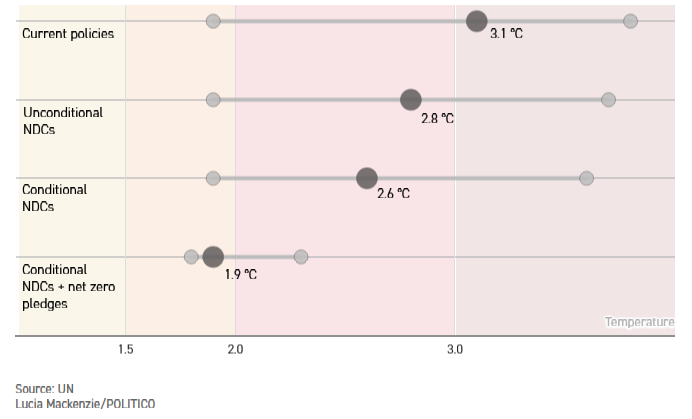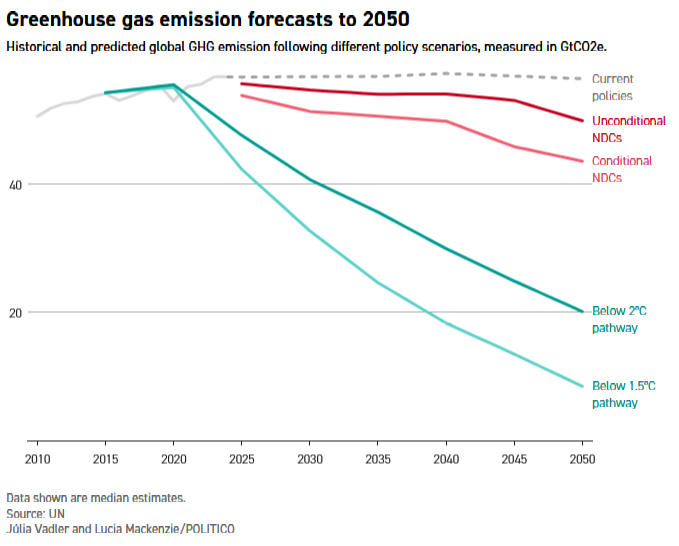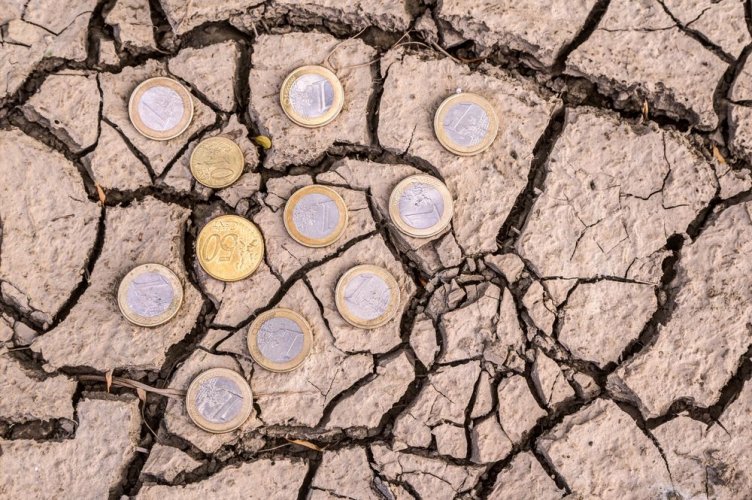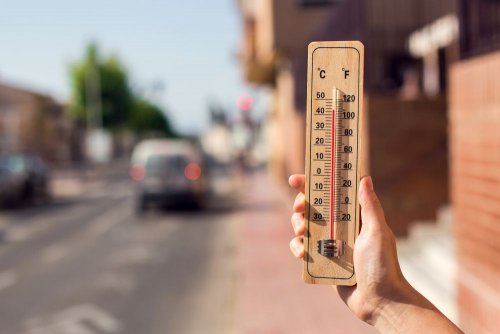Current plans and policies will increase the global temperature by 2.6-3.1°C already this century, contrary to the 1.5°C target stated in the Paris Climate Agreement.
Such a forecast is presented in a new report of the United Nations (UN), which was released on the eve of this year's international climate summit. According to him, the chances of limiting the temperature rise to 1.5°C are zero. The measures that countries have implemented so far are so insufficient that the world risks even exceeding the upper limit of the Paris Agreement – 2°C, warns the UN.
Scientists also warn that at 3°C, the world may pass several points of no return, which will radically change the planet's climate and raise the level of the world's oceans, in particular, due to the melting of polar ice caps.
"If countries fail to meet current commitments and then show a significant increase in ambition in new commitments that will be followed up quickly, the Paris Agreement's goal of keeping global warming to 1.5°C will be dead within a few years, and 2°C will take a place in the intensive care unit," said Inger Andersen, head of the UN Environment Department.
She called for "significantly stronger" plans known as nationally determined contributions (NDCs), more funding for climate action and leadership from the biggest polluters.
How to avoid fatal scenarios
According to the report, the world is on track to warm by 3.1°C by the end of the century if current global policies continue. The measures outlined in the current NAPs, which have not yet been fully implemented, will allow to reduce this indicator to 2.6-2.8°C.
Forecasts of peak warming in the 21st century under various scenarios relative to the pre-industrial level based on UN data look like this:

To get on track to 1.5°C, global emissions need to be cut by 42% by 2030, or 28% if we want to reach 2°C, the UN says. By 2035, global emissions must be reduced by 57% for 1.5°C and by 37% for 2°C.
How much money is needed for this
Andersen said that globally, measures to reduce emissions would require "at least a sixfold increase" in investment, which would require reform of the global financial architecture.
Whether the current WAEs will limit global temperature increases to 2.6°C or 2.8°C also depends on funding.
Historical and projected global greenhouse gas emissions until 2052 under different scenarios, expressed in CO2 equivalent

The issue of financing climate action in developing countries will be central to discussions in Baku at COP29. By the end of this climate summit, countries must agree on a new long-term financial goal that will replace the current target of $100 billion per year, which was agreed in 2009 and only reached in 2022.
Given the huge funding needs. some developing countries would like to see an annual target of more than $1 trillion.
Earlier, EcoPolitic informed that the focus of attention is SOR29 in November will be finances. We also told why, according to experts, COP climate summits have so far failed to solve the problem of climate change.





